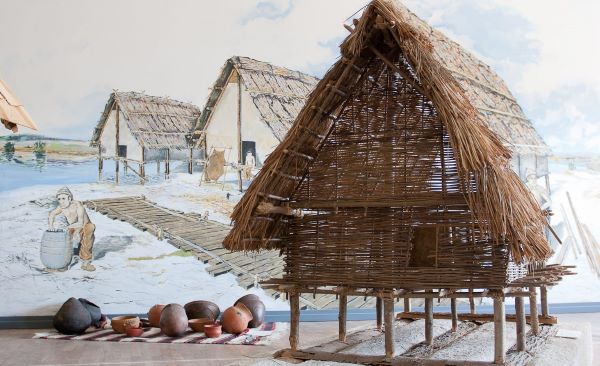Our history
Chrono Environnement
In praise of multidisciplinarity
This development was accompanied by a major restructuring. The first of these involved the human sciences, archaeology, history, and the paleoenvironment, with the introduction of a postgraduate diploma (DEA) in new methods and techniques in the human sciences in the 1970s and the creation of the CNRS Chrono-ecology laboratory in 1981.
Courtyard of the UFR SLHS in Besançon, Mégevand site© CC Ludovic Godard – UFC
In the same year, the geological research was reorganised. In 2004, the Maison des sciences de l’homme et de l’environnement (MSHE) distinguished itself from the other MSHs by focusing on the themes of man, time, territory and environment.
This restructuring led to the creation of a unique teaching programme in archaeology linking societies, cultures, environment and territories, as well as a postgraduate diploma (DEA) in environment, health and society. Joint responses to regional, national and international calls were then possible, as in the case of the PPF Natural environments – Man-made environments, which anticipated the desire to bring together the teams involved.
The Chrono-environnement Laboratory was created on January 1, 2008 by the merger of the Chrono-écologie Laboratory, the Laboratory of Environmental Biology, the Laboratory of Earth Sciences, the Laboratory of Health and Rural Environment of Franche-Comté and the Laboratory of Pathophysiology and Epidemiology of Infectious Drug Resistance.
This was a major challenge that many considered unrealistic because of its complexity: It was a cross-faculties, cross-site, and cross-organisational project (CNRS, University, INRA, Ministry of Culture, INRAP, hospital, later CEA…), and there were no teams. To get to this point, certain decision makers had to believe in the future of the project and support it. First and foremost, it was Françoise Bévalot, president of the Université de Franche-Comté until 2006, who strongly promoted the project; her successors found the necessary funds to renovate the premises and bring together the original teams, a process that is still ongoing. This was a major challenge for the CNRS and the Ministry of Higher Education and Research, which had to accept that the new UMR would succeed in eliminating the usual disciplinary divisions, anticipating what the new INEE institute of the CNRS would support from 2009. It should also be noted that the originality of such a grouping has, to say the least, disturbed evaluation bodies such as AERES, now HCERES, which are used to a more classical approach. At the local level, the very substantial financial support of the various regional councils was crucial to the development desired by the researchers.
In the heart of each team, we had to pass on this revolution and explain that we need to work with other colleagues, in a different way. The initiators of the project, sharing a common experience, are: Pierre-Marie Badot, professor of environmental biology; Patrick Giraudoux, professor of ecology; Didier Marquer, professor of geology; Jean-François Viel, professor of public health and epidemiology; Hervé Richard, CNRS research director, paleo-environmental scientist, who would become the first director of Chrono-environnement.
The multidisciplinary and multisite laboratory of Chrono-environnement has grown even further with the integration of a team from the CEA, and several researchers have joined the original core group. Today, this original project occupies a unique place in the French and international research landscape.





